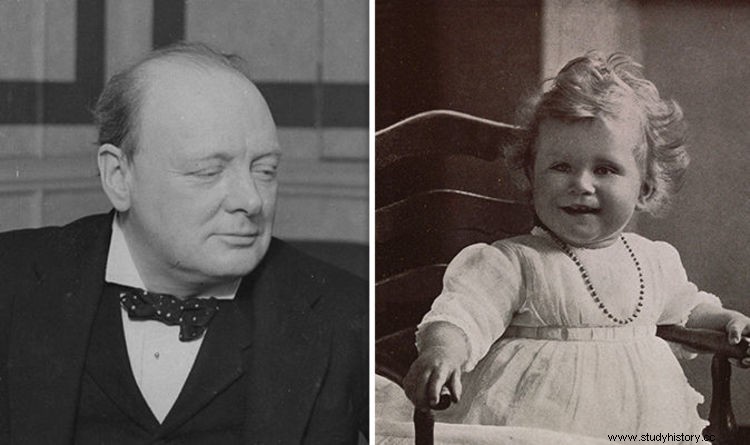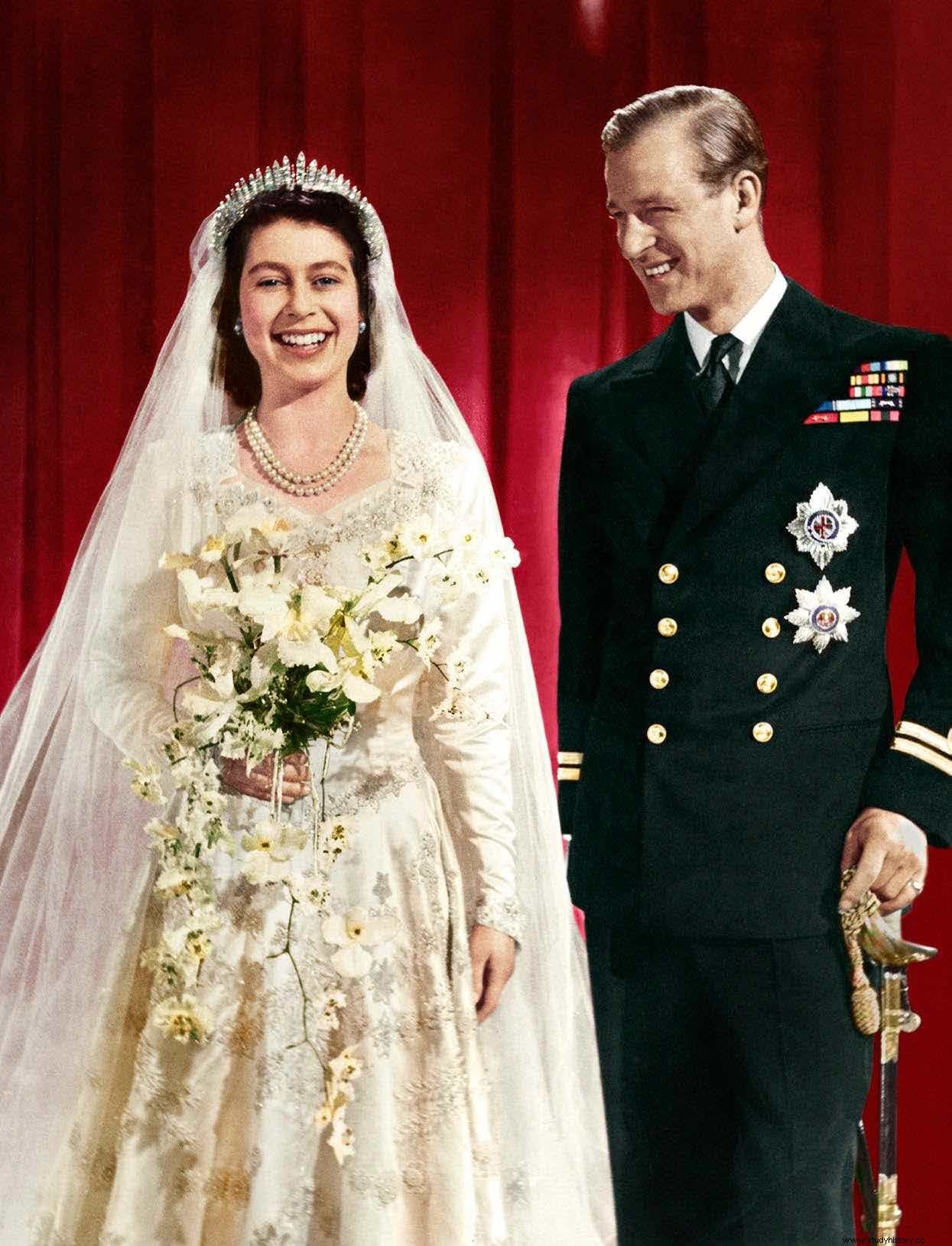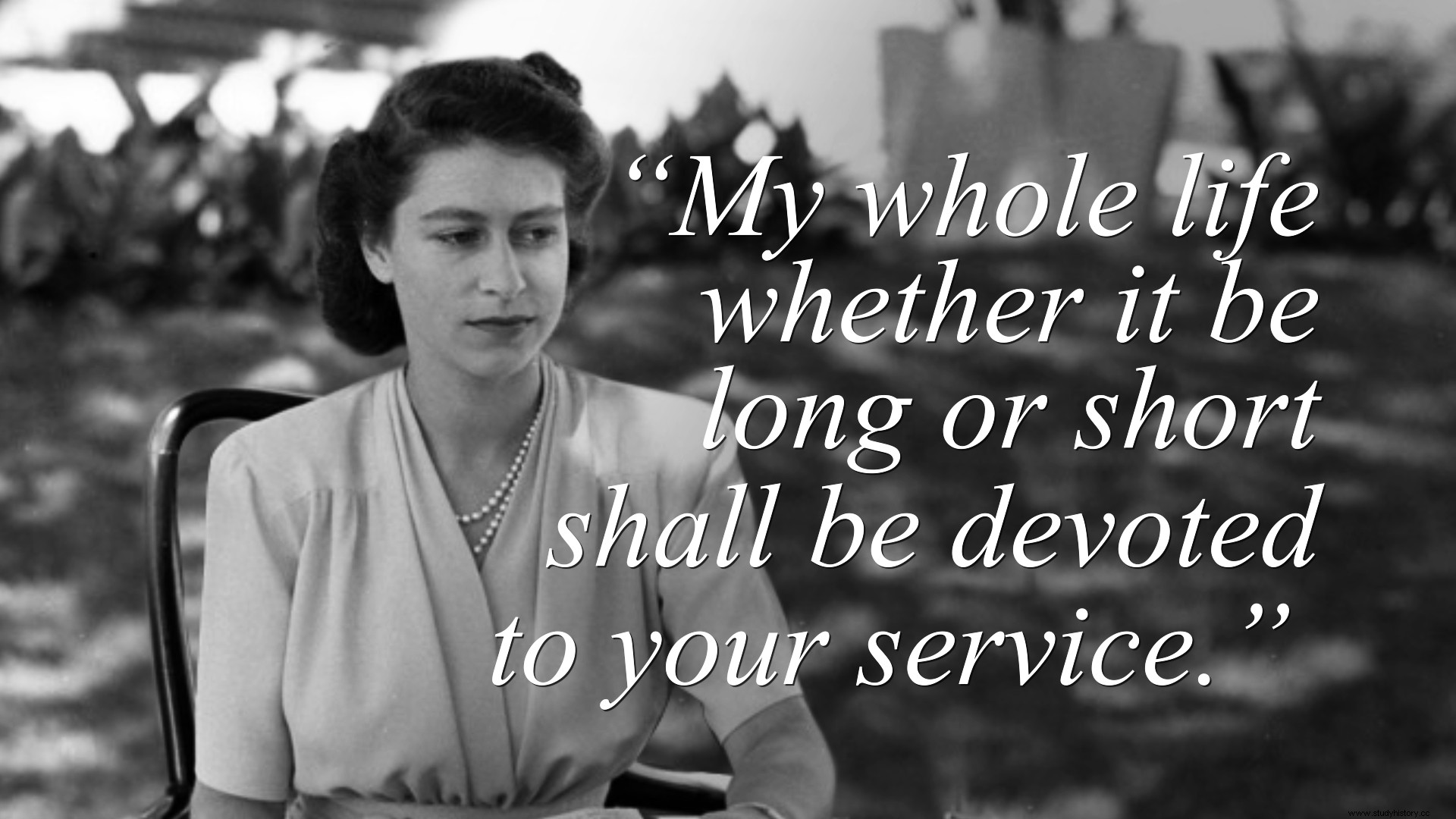For almost seventy years, Great Britain has been ruled by Her Majesty, Queen Elizabeth II. In this article we will learn about the various influences and importance her reign of glamor and prestige has given.
From humble beginnings, sudden changes and challenges will come a greater understanding of a powerful figure in modern times.
Simple beginnings

On a spring day in London in 1926, Elizabeth Alexandra Mary Windsor's life begins. Born to royalty through her paternal lineage and aristocracy through her mother's side, she becomes well-secured.
Her father was known as the second son of King George the Fifth. In Queen Elizabeth's childhood, she was well respected and valued by her elders.
For example, her royal grandfather (George V) was very fond of her, resulting in her calling him "Grandpa England". During the King's illness in 1929, Elizabeth was credited with aiding her grandfather's recovery with her presence.
Furthermore, she was also nicknamed "Lilibet" which shows further affection from her family in her early days. With the arrival of her younger sister Margaret in 1930, the family grows with successors.
During most of their academic years, Elizabeth and Margaret were educated by their mother and other figures. In summary, the start of Queen Elizabeth's upbringing was greeted with warmth and encouragement.
Mark of a Queen

Through the years of Queen Elizabeth's education, she gains insightful knowledge in literature, music, history, language and music. Also, her majesty was fascinated by animals, tidiness and taking responsibility.
To her family's surprise, she began to show traits of a queen early in life. Indeed, even Winston Churchill described the young Queen Elizabeth as "having an unusual air of authority and reflection for a child".
Overall, she earned a reputation for being well-behaved and reasonable, yet happy. During Queen Elizabeth's childhood, she stood as the third successor in the family's royal heritage.
From her uncle, her father and herself, she stood at that time on an easy status. That means no one expected her to become queen one day, since the throne had an even amount of heirs.
Anyway, this was normal, but there were some surprises as time went on for the British royal family.
Design of the royal lineage

When Elizabeth's grandfather (George V) died in 1936, her uncle Edward VIII assumed the throne as the new king. This had put her into the successor, a place in second place now.
By the same year, Edward VIII loses all rights to his royal status when he marries American divorcee Wallis Simpson. This became a major scandal because it reshaped the course of the royal line's path.
To illustrate, Elizabeth's father soon became king after his elder brother's abdication. This plays a significant role in the modern pool of British royals because Edward's line becomes minimal.
As always in that period, the first male heir to the throne is given seniority over other siblings. Even if a male royal had an older sister, he would automatically gain status unfairly.
This became known as the male preferential primogeniture. Returning to Elizabeth's father becoming the new king, she is first given the rights that a male relative would.
A royal upbringing

Queen Elizabeth's time as a youth was marked by many breakthroughs in her qualities and status. For example, she received tuition to be educated at Eton College.
Another is to have the chance to learn and speak French by the instruction of a governor resident in the country. To add, the first Buckingham Palace Company called "The Girls Company" was ever formed. This was for Elizabeth to socialize with peers like herself.
When the club was established, she also joined a girl scout organization where she was given the status of Sea Ranger. Furthermore, 1939 served as a great year for the new royal family as they toured former colonies.
From Canada, the United States, Australia and New Zealand, they made their presence known as the new face of the throne. Another achievement of this time was the first transatlantic telephone conversation that took place between young Elizabeth and her parents.
True test for the future queen

The first half of 1939 marked a grand and exciting time for the new royals to emerge, but things changed. With the arrival of September of the same year, The United Kingdom participates in the Second World War.
As the hostile and deadly environment became with frequent bombings by opposing forces, Elizabeth and Margaret remain in Britain. A close consultant from the royals suggests that the two princesses evacuate to Canada for safety, but their mother refuses.
Young Elizabeth stays at Balmoral Castle in Scotland until the winter of 1939. From there, she temporarily moves to various locations across Britain until she settles in Windsor Castle.
In 1940, Elizabeth takes part in her first royal radio broadcast when she sends a message to children being evacuated. In her message, she reassures her listeners by reminding them that no matter how difficult things get, things will end well.
All in all, these events served as a great challenge for the young Elizabeth.
World War II Achievements

By the era of World War II, Elizabeth had progressed and achieved her role as princess and future queen. In 1943 she made her first solo public appearance to visit the Grenadier Guards as a young adult.
When she came of age, she was also given the status of one of the five ministers. This was to ensure that there was proper representation in case something should happen to her father.
As Elizabeth became more independent, she also achieved other feats such as being named Honorary Second Subaltern. This was for the Auxiliary Territorial Service in the British military.
Elizabeth also knew how to drive and serve as a mechanic for cars. These feats served as a great representation of Her Majesty's duty to her country and people.
She does have her mischievous side though as she joins her sister in sneaking through public crowds on Victory Day.
Marriage and further expertise

In 1947, young Queen Elizabeth took part in her first overseas tour with her family in South Africa. Since she always wanted to be with them growing up, she now had the chance to take part in this exciting event.
During the event, she delivers a moving broadcast speech that highlights its relevance for today. "I declare to you that my whole life, whether short or long, shall be devoted to your service."
This was only one of the most important foreshadowings of her reign that was soon to take place. In November of the same year, Elizabeth married her longtime crush, Philip.
Their wedding was somewhat controversial because his family had ties to former Nazi Party members. For this reason, Philip's sisters and Elizabeth's former royal uncle Edward VIII were not invited to the event.
Not long after the couple welcomed a son named Charles in 1948 and daughter Ann in 1950.
Rise of a Queen

In 1951, things took a sudden turn for Elizabeth who replaced her father with his royal duties and appearances. King George VI's health continued to deteriorate, leaving the royal family on the edge of their seats.
When Elizabeth entered Kenya for her royal duties, Philip unfortunately told her the humiliating news. With her father now gone, Elizabeth became the next living heir to inherit the throne.
Interestingly, with these events taking place, the royal family came to terms with naming customs for future descendants. The dominant surname became Windsor. Also, Queen Elizabeth II's coronation took place on 2 June 1953 in the historic site of Westminster Abbey.
It was one of the first coronations in British history to be televised and seen from foreign eyes. The event was a sight to behold as her dress represented various Commonwealth countries. Essentially, this set in motion the beginning of a remarkable era.
Decolonization of territories

As Queen Elizabeth II's reign began, she worked to decolonize territories previously controlled by British forces. Surprisingly, some countries in Africa declared to be loyal to her majesty regardless of the status they get.
In a way, it seems her family left a lasting impression on the outer corners of the globe. Although she still retained control over some territories, Elizabeth became more of an aspirational figure for progression.
This played a big step forward in her early image as she was just beginning her reign.
Silver Jubilee

After two decades, Queen Elizabeth marked her first jubilee in 1977. The purpose of this was to celebrate her reign as it promoted her strength and influence over her kingdom.
The event was another big effort for her Majesty because her foreign relations were growing. For example, other countries from former colonies or random regions showed mutual respect for Elizabeth.
The purpose of Jubilee's is to signify success and to be stable. It starts with silver, ruby, gold, diamond. Sapphire, and finally platinum.
The longer the reign, the greater the rank and title. This is one of the most coveted prizes a King or Queen of Great Britain can achieve.
A nearly century of impact

Fast forward to modern times, Queen Elizabeth is now father to eight grandchildren and twelve great-grandchildren! She has achieved her succession as she continues to rule at the age of ninety-five.
Her reign has brought great prosperity and a new record in royal history as she surpasses the reigns of other monarchies. Queen Elizabeth is also a sponsor of many organizations and charities.
In her almost seventy year reign she has raised over one point four billion pounds for these charities! To add, she is also an animal lover, especially corgis.
Did you know that her corgis are descendants of her original companion Dookie? It shows how not only is she concerned with the well-being of others, but how well she organizes and works.
Indeed, Her Majesty's loss will have a major impact on the UK and the rest of the world. What many are curious to know now is what will happen when Elizabeth passes away.
Protocols after Elizabeth's death

As Queen Elizabeth's health continues to fluctuate by the day, many members of the royal family are preparing to cope. A first thing that will happen after the Queen's death is that the Prime Minister of Commonwealth leaders will be notified.
The second is to reveal the tragic news to the British public by interrupting all BBC broadcasts. Surprisingly, British newspapers already seem prepared to have the headlines in print when the news breaks.
To add, from interrupting the broadcast, Buckingham palace will place a notice in front of the gates to alert passers-by. The third is the blackout of royal media accounts and other online news sources that focus on the passing of queens.
Also, most media on TV will feature documentaries and other films about Queen Elizabeth's life. The next protocol to be followed would be to have Parliament recalled.
The purpose of this is for the members to swear allegiance to the next successor in the line. It usually takes place the day after Queen Elizabeth's death.
Further Minutes from Queen Elizabeth's Departure
Furthermore, the next successor to the throne will be Elizabeth's eldest son Charles. From there he also had to give his former Prince of Wales title to his son William.
Another is that the British pounds are reprinted to have the face of the new king. The next step is for Charles to take a royal tour.
This is to ensure that there is a peaceful continuity of other societies co-existing with Britain after Elizabeth's passing. The next big step is for most businesses and companies in the UK to temporarily close for national mourning.
Queen Elizabeth's funeral will also be a national holiday for many to attend. The public will have the chance to pay their respects to her display in an open casket.
Elizabeth will also be laid to rest in Westminster Abbey alongside past historical predecessors of British history. The semi-final step is for the Commonwealth of Former British Territories to sever ties with Great Britain.
Long live the queen

One of the final steps to complete the protocol of Queen Elizabeth's passing is Charles' coronation taking place. It will also be very similar to the mother's, but will completely ring in a new was for the UK and the rest of the world.
Queen Elizabeth's reign will always have a great influence in history because she is one of the most recognized monarchs for most British citizens. The past seventy years have been prosperous and steady.
Only time can tell what will happen after her passing.
The significance of Queen Elizabeth's reign of glamor and prestige

In conclusion, from a warm beginning, a test of faith and serving her people, Queen Elizabeth becomes a successful figure for Britain. She currently stands as one of the longest-reigning monarchs ever, as she will be rewarded with a platinum jubilee next February.
For being ninety-five years old, she still holds fast to her original purpose of not letting others down. The future of Britain has big questions after her passing, but her influence will definitely never be forgotten.
Queen Elizabeth will always stand as a magnificent figure in history for generations to come.
Works quoted:
What to expect when Queen Elizabeth II dies (britishheritage.com)
Elizabeth II - Wikipedia
The Royal Family
Royal family tree and line of succession - BBC News
Queen Elizabeth II:13 key moments of her reign - HISTORY
55 photos of Queen Elizabeth II through the years (oprahdaily.com)
